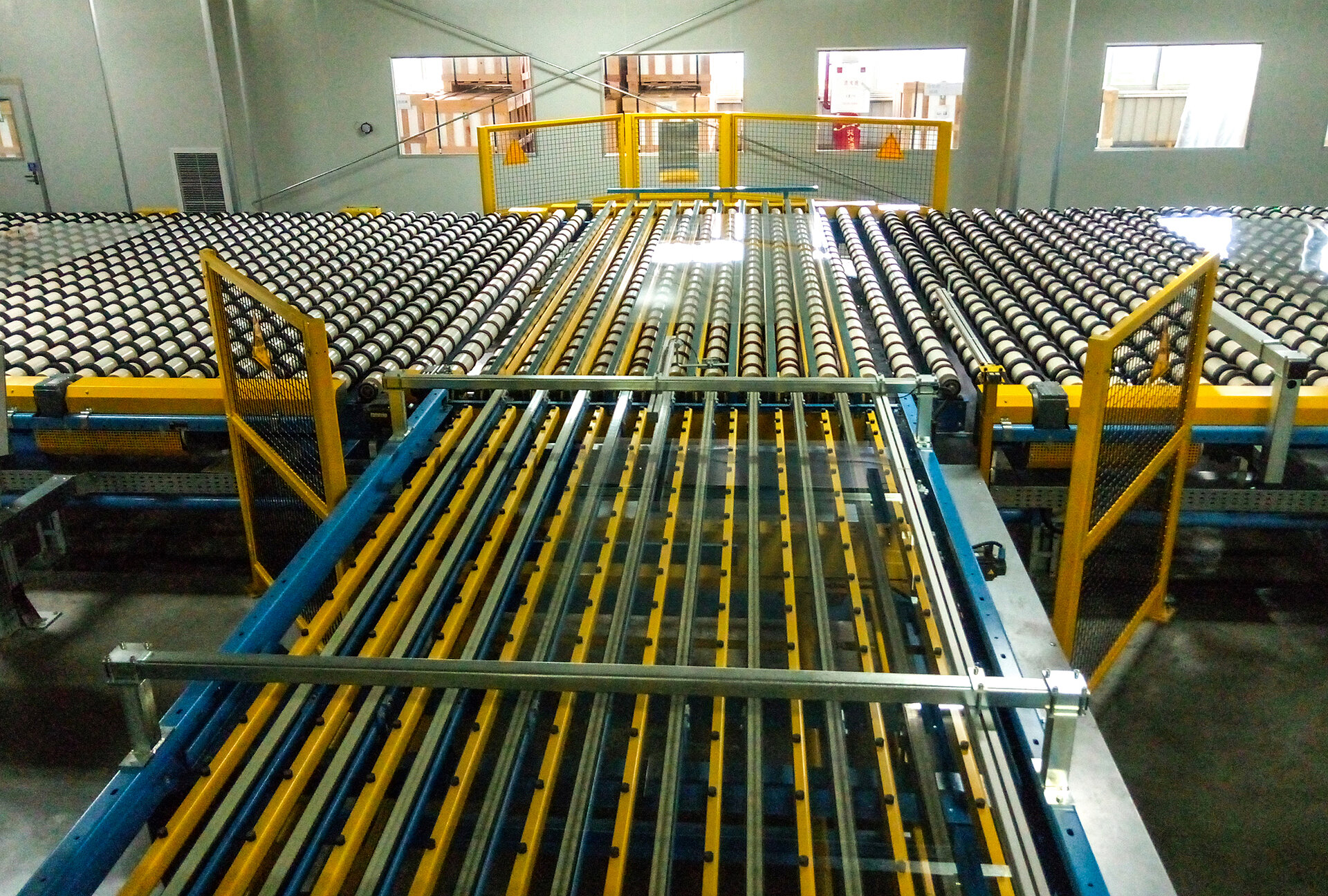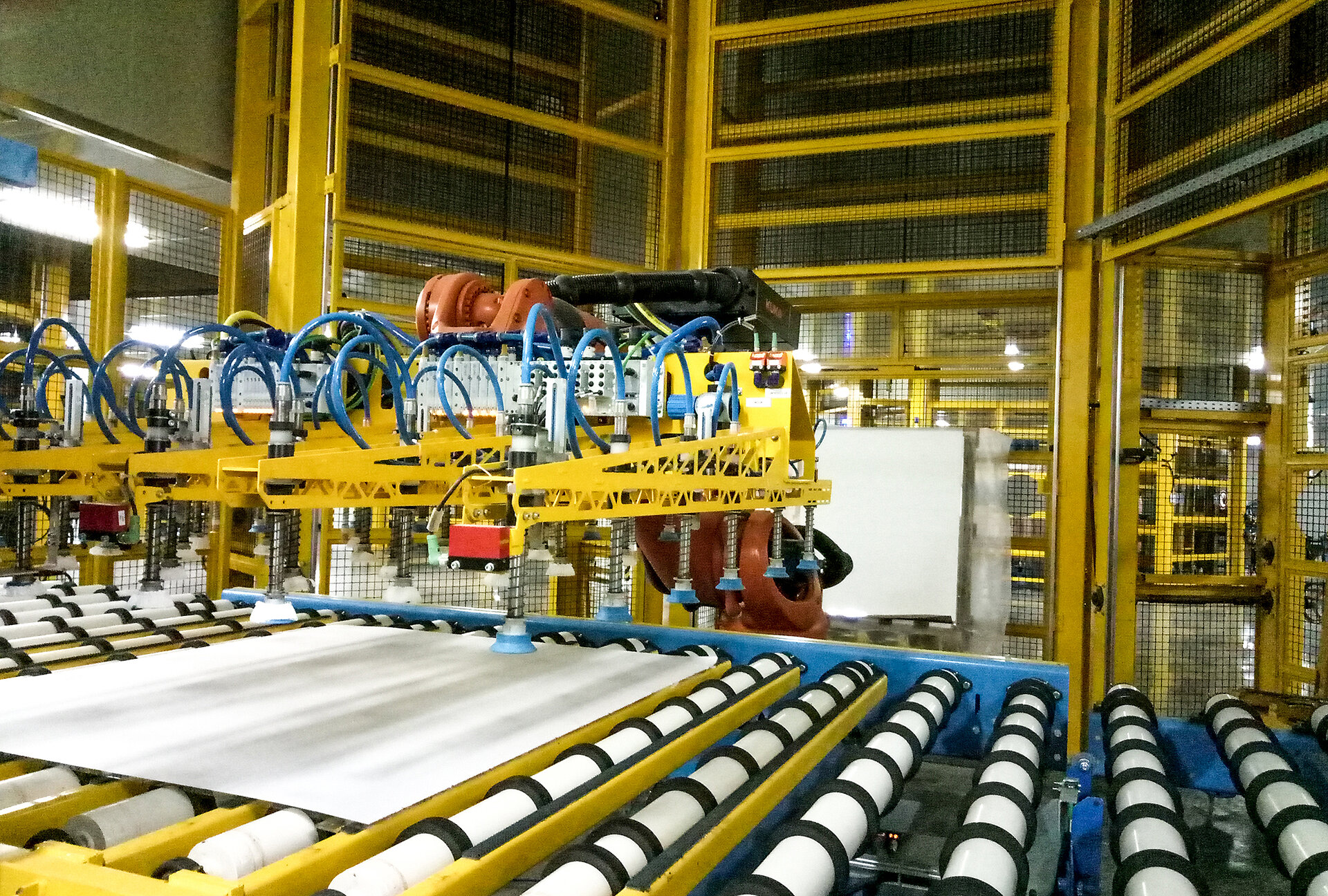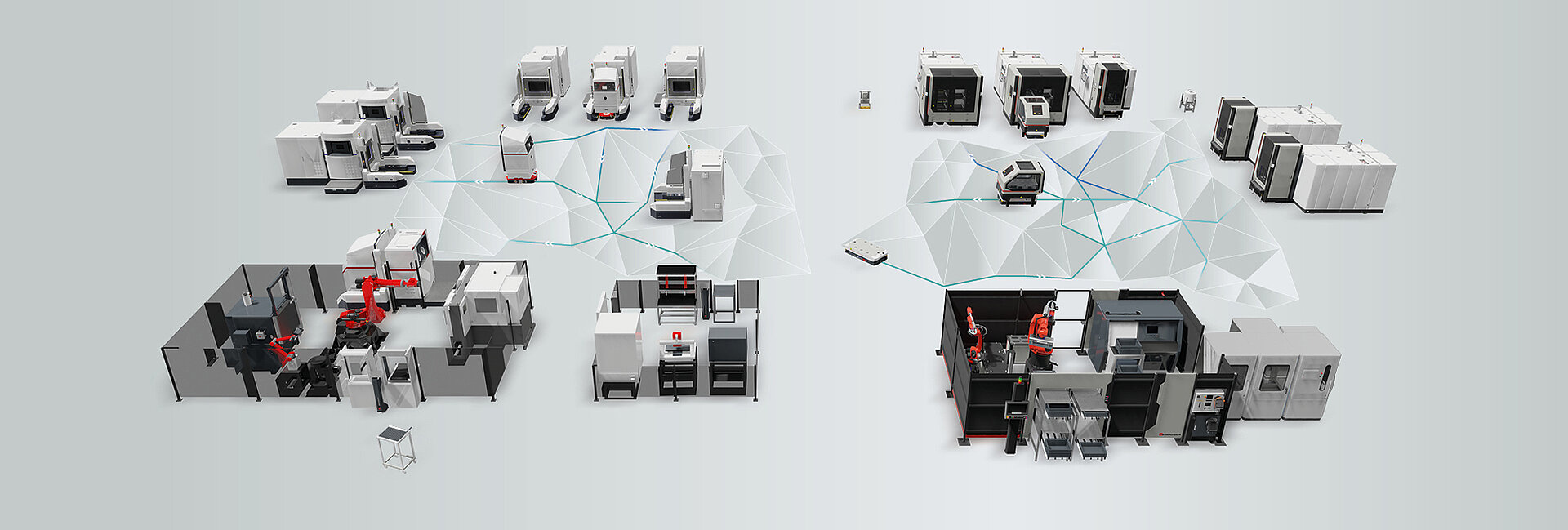Thin glass perfection
Information, conversation, communication, and interaction: The demand for smart phones, flat screen monitors, and tablets is skyrocketing – respectively the glass industry is expanding its thin glass production capacities, for which Grenzebach supplies robust and high-precision facilities that set international benchmarks.
“As thin glass production is quite complex and expensive, we offer technologies which minimize the glass reject at the "Cold End" while providing top-notch quality right from the beginning", says Werner Rührer, Glass Sales Manager at Grenzebach; A challenging task, with glass thinner than a sheet of paper that is very instable and can easily. In order to safely handle sheets of 0.2 to 1.1 millimeters, Grenzebach lines work with very narrow roller-ring spacing so the glass won’t bend too much during conveyance. For this purpose, the rings have to provide a precise concentric run.
With production speeds of 6 to 15 meters per minute, the Grenzebach measuring system FPI float st&th executes continuous strain and thickness measurements while measuring width and temperature of the glass at the same time. “The tolerances in thin glass production are very small but with our measuring system, the producers are on the safe side“, explains Werner Rührer. The Grenzebach defect scanner FPI float vision reveals defects in or on the glass in real time. Inclusions and optical distortions are classified and allow a high transparency and product analysis.
Thin glass lines produce 30 to 300 tons of thin glass per day. The cutting equipment at the cold end is the important core of the automated line and where Grenzebach sets new standards. Length- and cross-wise cutting systems rely on field-proven Grenzebach cutting heads. The electromagnetic cutting force controllers allow accurate cutting force adjustment. The newly developed closed-loop controller makes the process even more accurate within fractions of a second.
More special features of the Grenzebach thin glass production lines include: Special edge trim conveyor for controlled glass edge snapping, contact-less alignment using sensors in order to avoid glass scrap, and the Inline Sheet Inspection FSP G10 for the inspection of shape and sheet size as well as edge evaluation.
Information, conversation, communication, and interaction: If thin glass is manufactured for specialty products, we must have clean room conditions in the environment. There is barely any dust in the manufacturing hall. The use of a blowing and suction device eliminates even the smallest particles produced when the glass is scored and snapped. Special-purpose crushers are completely encapsulated and are equipped with a suction system.
At the end of the line: stacking with a robot. The robots with special suction frames sort the glass for air-tin-side stacking with respect to quality and position in the endless glass ribbon onto several rack locations. In the case of thin glass, paper inter-layers are used in order to avoid potential damages. Grenzebach has automated the process for paper application.
If requested, the manufacturer can apply his logo to every thin glass sheet. The code is applied to the glass sheets during the production process with the DMC laser marking system. This allows identification of every single sheet, and the manufacturing information is directly supplied with the product.






